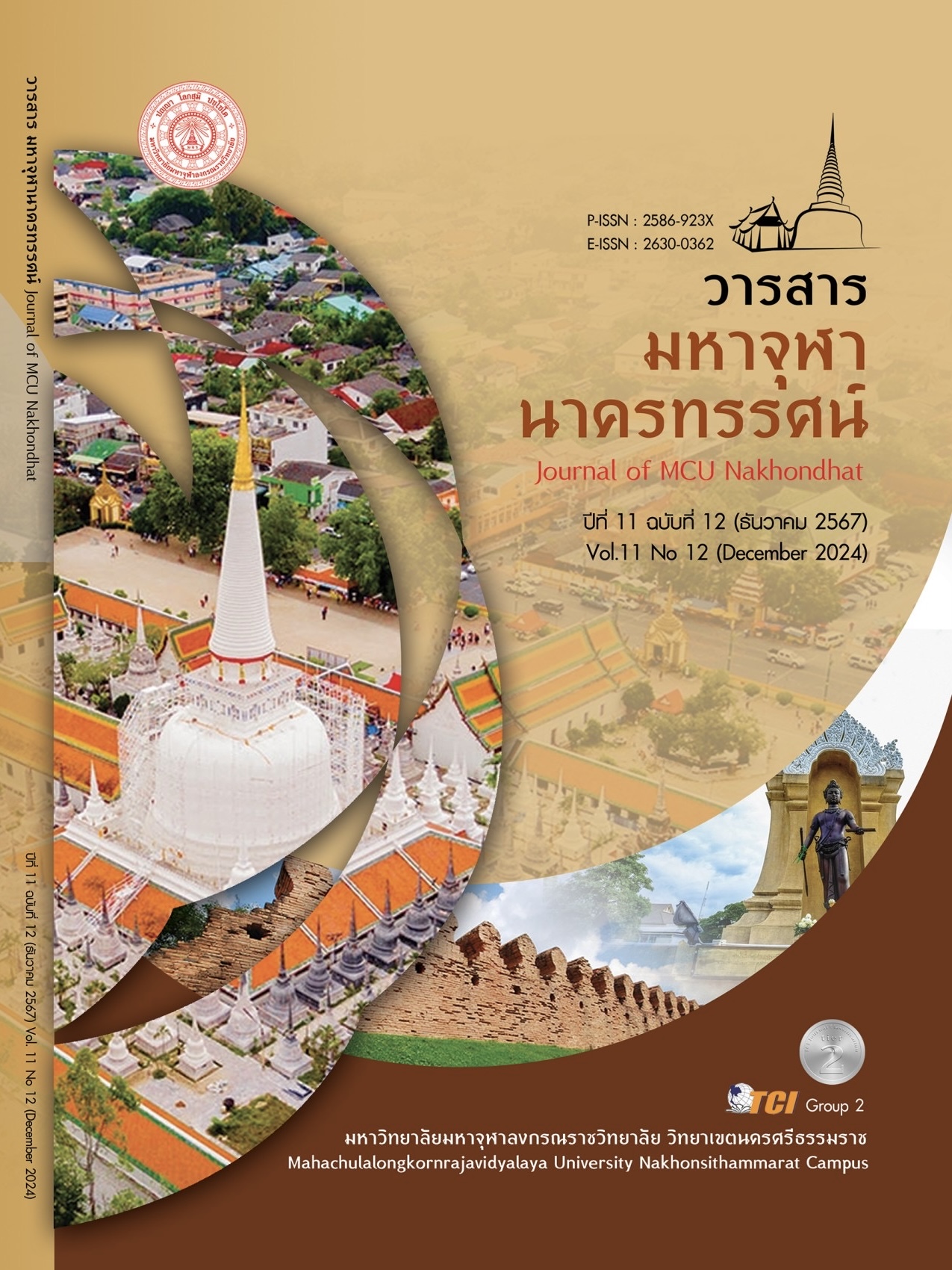THE DEVELOPMENT MODEL OF SUPERVISION MONITORING, AND EVALUATION FOR POLICY IMPLEMENTATION OF THE SAKON NAKHON PRIMARY EDUCATIONAL SERVICE AREA OFFICE 2
Main Article Content
Abstract
This research aimed to develop a model for supervision, monitoring and evaluation of policy implementation and to study the results of using the model for supervision, monitoring and evaluation of policy implementation of Safe and Quality Schools of Sakon Nakhon Primary Educational Service Area Office 2. This research used research and development methods, divided into 2 phases: development of the supervision model, manual and application. The informants were 20 stakeholders, and 9 experts. The study of the results of using the supervision model was conducted with the target group of 243 schools under the organization. The sample group was the executive committee, 70 persons. The instruments used were 1) Expert Seminar Guidelines, 2) Supervision, Monitoring and Evaluation Model for Policy Implementation and 3) Satisfaction Assessment. The statistics used for quantitative data analysis were mean, percentage and standard deviation. The qualitative data were analyzed using content analysis. The results of the research found that the developed model consisted of 1) Principles, 2) Objectives, 3) Implementation framework, 4) Mechanisms and support systems and 5) Processes, including planning, briefing meetings, implementation of plans, reporting results and implementation of results, and
6) Measurement and evaluation. As for the results of using the model, it was found that the results of supervision, monitoring and evaluation of the operations were at an outstanding level. When considering each aspect, it was found that the aspect of educational opportunity had the highest average score, followed by the aspect of safety, the aspect of organizing an atmosphere and environment conducive to learning, the aspect of important characteristics of the learners and the aspect of the quality of the learners, respectively. And the results of the evaluation of satisfaction with the model, manual and application were at the highest level overall.
Article Details

This work is licensed under a Creative Commons Attribution-NonCommercial-NoDerivatives 4.0 International License.
References
กลุ่มนิเทศ ติดตามและประเมินผลการจัดการศึกษา. (2566). รายงานผลการนิเทศ ติดตามและประเมินผลการจัดการศึกษา ประจำปีการศึกษา 2565. สกลนคร: สำนักงานเขตพื้นที่การศึกษาประถมศึกษา สกลนคร เขต 2.
จิระภา ธรรมนำศีล. (2562). การพัฒนารูปแบบการนิเทศการจัดประสบการณ์การเรียนรู้เพื่อเตรียมความพร้อมด้านภาษาของเด็กปฐมวัย. ใน วิทยานิพนธ์การศึกษาดุษฎีบัณฑิต สาขาการนิเทศการศึกษา. มหาวิทยาลัยมหาสารคาม.
ชาครีย์ คะนอง. (2559). การพัฒนารูปแบบการกำกับติดตามและประเมินผลการจัดการศึกษา ด้านทักษะการคิดขั้นสูงในสถานศึกษาขั้นพื้นฐาน : การประยุกต์แนวคิดการประเมินแบบแผนที่ผลลัพธ์. วารสารบริหารการศึกษา มหาวิทยาลัยขอนแก่น, 12(2), 195-207.
ทัศน์ศิรินทร์ สว่างบุญ และบุญชม ศรีสะอาด. (2563). รูปแบบการติดตาม ตรวจสอบและประเมินผลงานของมหาวิทยาลัยราชภัฏ. วารสารวิจัยราชภัฏพระนคร สาขามนุษยศาสตร์และสังคมศาสตร์, 15(1), 422-437.
บุญชม ศรีสะอาด. (2553). การวิจัยเบื้องต้น. กรุงเทพมหานคร: สุวีริยาสาส์น.
ประวิต เอราวรรณ์. (2560). ปฏิรูปการศึกษาทั้งระบบเพื่อคนทั้งมวล Education Reform for All. วารสารราชภัฏสุราษฎร์ธานี, 4(1), 57-70.
รัฐธรรมนูญแห่งราชอาณาจักรไทย พุทธศักราช 2560. (2560). ราชกิจจานุเบกษา เล่ม 134 ตอนที่ 40 ก 1-90. (6 เมษายน 2560)
วรัญญภรณ์ ชาลีรักษ์. (2564). รูปแบบติดตามและประเมินการดำเนินงานตามนโยบายสำนักงานคณะกรรมการการศึกษาขั้นพื้นฐาน “วิถีใหม่ วิถีคุณภาพ”. ใน รายงานวิจัย. สำนักงานคณะกรรมการการศึกษาขั้นพื้นฐาน, กระทรวงศึกษาธิการ.
วาโร เพ็งสวัสดิ์. (2553). การวิจัยพัฒนารูปแบบ. วารสารมหาวิทยาลัยราชภัฏสกลนคร, 2(4), 1-16.
สำนักงานเขตพื้นที่การศึกษาประถมศึกษาสกลนคร เขต 2. (2566). แผนพัฒนาการศึกษาขั้นพื้นฐาน พ.ศ. 2566 - 2570. สกลนคร: สำนักงานเขตพื้นที่การศึกษาประถมศึกษาสกลนคร เขต 2.
Esther, K. et al. (2017). Balancing Relations and Results in Regional Networks of Public-Policy Implementation. Journal of Public Administration Research and Theory, 27(4), 676-691.
Pamela, A. M. (2007). Intraorganizational Implementation Research: Theory and Method. Journal of Public Administration Research and Theory, 17(4), 553-566.


